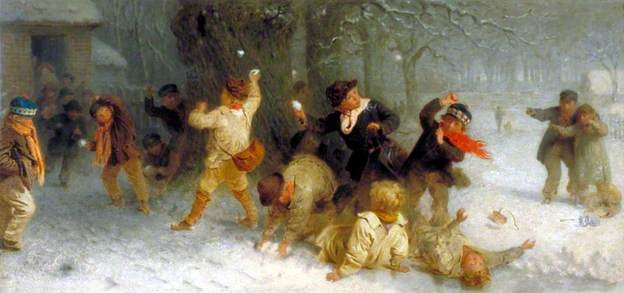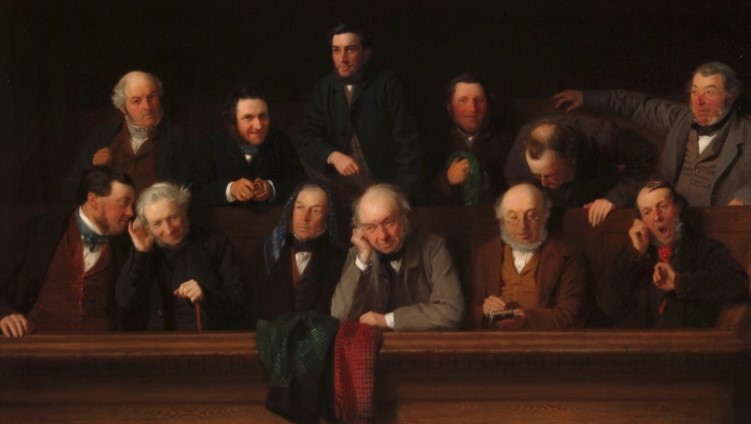Boys Playing by John Morgan
|
Research by Sally Banister & Norma Smeaton
|
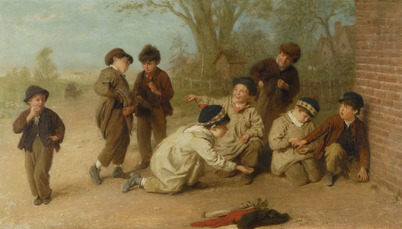
Acc No 208
Artist John Morgan
Artist dates 1823-1885
Medium oil on canvas
Size 60.9 x 104 cm (24 x 41 in)
Date painted unknown
Inscr: signed
Donor Harold Frederick Hughes 1901-1976
Lightwood Avenue, Lytham St Annes
Date donated bequest 1976
Artist John Morgan
Artist dates 1823-1885
Medium oil on canvas
Size 60.9 x 104 cm (24 x 41 in)
Date painted unknown
Inscr: signed
Donor Harold Frederick Hughes 1901-1976
Lightwood Avenue, Lytham St Annes
Date donated bequest 1976
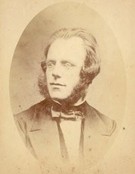
ARTIST
According to the 1851 census John Morgan was born in Pentonville, London, in 1823. On both the 1861 and 1871 censuses his date of birth appears as 1824 although this date does not appear to have been accepted online where there continues to be some discrepancy; for example, the Victoria and Albert Museum list Morgan's dates as 1823-1886, whereas the Government Art Collection gives them as 1822-1885. We can be certain that Morgan died in 1885, his obituary appearing in The Surrey Advertiser on 3 October 1885. He was married to Henrietta (nee Clare) and had three children. One child, Edwin, born 1849, appears in the 1851 census but not the later ones. He also had a daughter, Lillian, born 1859 and a son, Frederick, born 1846, who himself became a much celebrated artist. The 1861 census recorded the family as living in Church Yard, Aylesbury and described Morgan as an 'Artist Subject Painter in Oils'. His wife, Henrietta, was described as an 'Artist's Counsellor'. By 1864 the Morgans had moved to Tring Villas, Aylesbury, a group of three large houses on the corner of New Road and Britannia Street. John Morgan suffered from a bad chest and by the mid-1860s he seems to have begun visiting a number of places with a view to finding a home more congenial to his health. By the 1870s the family had moved to Guildford and here Morgan painted a number of works including The Storm. Whilst studying at the London School of Design, Morgan was also apprenticed as a wood carver and designer to the furniture makers, Gillow, Jackson and Graham. To further his career as an artist he moved to Paris where he studied under the designers, Thomas Couture (1815-1879) and Paul Delaroche (1797-1856). Morgan's work was also influenced by the work of other Victorian genre painters, most notably Thomas Webster (1800-1886) and William Powell Frith (1819-1909). He began exhibiting at the Royal Academy of Arts in 1852 and was elected to membership of the Society of British Artists in 1875. There, he exhibited many works including Snowballing (now called Boys Snowballing held at the Victoria and Albert Museum in London). This painting shows children similarly dressed to those portrayed in Boys Playing. The smocks were generally worn whilst the children played in order to protect the 'good' clothing underneath. The hats were modelled on the Glengarry bonnet, worn at the time by soldiers from some regiments. Many of John Morgan’s paintings feature children at play, as in the example above,
including: Playing at Soldiers Blackburn Museum and Art Gallery Don’t ‘ee Tipty Toe Walker Art Gallery, Liverpool Another painting of the same genre, Find the Thimble, was sold at Sotheby’s, New York in November 1999 following the closure of Haussner’s Restaurant in Baltimore. This venue had housed a substantial art collection, initiated by the owners wife, Frances Wilke Haussner, in 1939. During his time in Aylesbury Morgan painted at least three pictures which depicted local scenes and people. One, entitled Gentlemen of the Jury (also referred to as The Jury), earned him the nickname of 'Jury Morgan'. Morgan and his wife moved to Hastings in 1882 where he remained until his death three years later. His studio sale was held at Christie's, London on 1 March 1886. Frederick Morgan - John Morgan's son 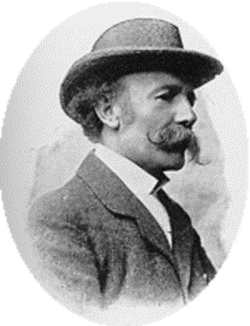
Morgan’s son, Frederick Morgan, also became a successful and popular 19th century genre artist, whose work included many childhood scenes. He was tutored in art by his father but also worked in the photographic studio of Samuel Payne to enable him to make closer observations of the subjects he might later paint. Frederick married the artist Alice Havers in the 1870s and they had three children but later divorced. He married twice more, having two children in his second marriage.
One of Frederick's most famous paintings, His Turn Next (Lady Lever Art Gallery), which shows two children about to bathe a dog, was used as an advertisement by the Pears soap company. DONOR Harold Frederick Hughes was born in Chorlton, South Manchester, to Albert Henry Hughes (1878-1936) and Florence nee Slack (1882-1953). Albert was described in the 1911 census as a 'salesman in cotton'. He was to become the Managing Director of Haslam's Ltd of Manchester. He was a keen Manchester City Football Club supporter, becoming a director and later Chairman from 1928 to 1935. By 1924 the family had moved to Mon Abri, St Paul's Avenue, Fairhaven. Albert's health deteriorated and he died at the age of 57. Harold, following in his father's footsteps, was described as 'an assistant Department Manager. He remained single and continued to live at Mon Abri, with his widowed mother and sister. His last address was Lightwood Avenue, Ansdell, Lytyham St Annes. |
REFERENCES
Your [email protected] artnet.com buckscc.gov.uk Wikipedia census records 1851, 1861, 1871 thecityreview.com/199shaus Donor references: Find my Past 1911 census 1939 Register Lancashire Evening Post 27/28 April 1934 Free BDM amounderness.co.uk probatesearch.service.co.uk |
